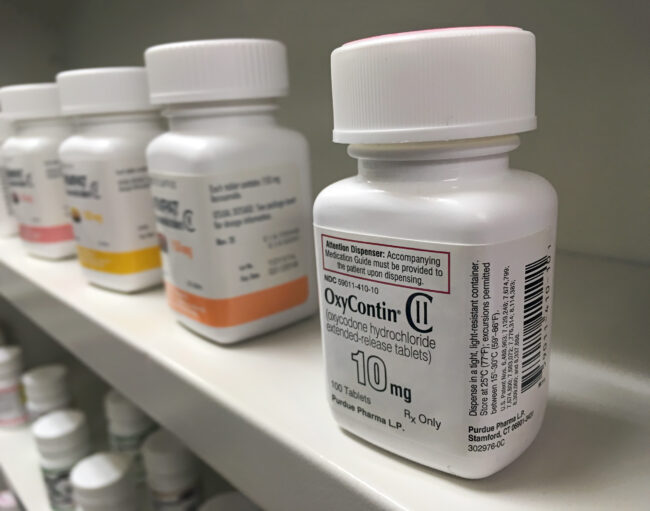Have you ever wondered, “How long will it take for my body to get rid of oxycodone?” If you’ve pondered this question, you’re in good company. It’s crucial to understand how this potent painkiller moves through your system, especially if you’re dealing with chronic pain or even just a short-term need for relief. In this comprehensive guide, we’ll break down the science behind how long oxycodone stays in your system, the factors that influence this timeframe, and the types of tests that can detect its presence. Let’s dive in.
Table Of Contents
−- Understanding the Timeline: How Long Oxycodone Stays in Your System
- Different Forms of Oxycodone: Immediate-Release vs. Extended-Release
- Variables That Impact Oxycodone Retention in Your System
- Drug Testing Methods for Oxycodone Detection
- The Risks of Misusing Prescription Opioids
- Navigating the Road to Recovery: Treatment Options for Oxycodone Addiction
Understanding the Timeline: How Long Oxycodone Stays in Your System
Oxycodone’s detectability varies from one type of drug test to another. For instance, a urine test can detect oxycodone for up to 3-4 days after you’ve taken it. Meanwhile, a hair test can pick up the presence of the drug for up to a staggering 90 days. When it comes to blood tests, oxycodone is usually detectable for 1-2 days post-consumption.

Keep in mind that multiple factors come into play here. Your age, weight, metabolic rate, and even the medications you’re taking can all affect how long oxycodone remains in your system. The timeline isn’t the same for everyone, which makes understanding these variables even more critical.
Different Forms of Oxycodone: Immediate-Release vs. Extended-Release
Oxycodone comes in various formulations designed to accommodate different pain management needs. Immediate-release oxycodone offers relief for about 4-6 hours, whereas the extended-release version can provide relief for up to 12 hours. Regardless of the form, both types remain detectable in urine tests for roughly 3-4 days after the last dose. People with specific liver or kidney conditions may find that oxycodone stays in their system for an extended period. Always consult with a healthcare professional before starting any opioid medication, as they can be habit-forming.
Variables That Impact Oxycodone Retention in Your System
A number of factors can extend or shorten the time oxycodone stays in your system. These include your age, weight, metabolic speed, existing medical conditions, and the dosage taken. While urine tests typically detect oxycodone up to 3-4 days after consumption, hair tests offer a much longer window—up to 90 days. Blood tests can also detect the substance but offer a much shorter detection window, usually up to 1-2 days.
Drug Testing Methods for Oxycodone Detection
Various types of drug tests are used to detect oxycodone, each with its own pros and cons. Urine tests are commonly used due to their reliability, but they can sometimes yield false positives. Hair tests offer the longest detection window, lasting up to 90 days. Blood tests provide the most accurate results but have the shortest detection window. Saliva tests are also available, and they can be particularly useful in scenarios where other substances might be missed by standard tests. Companies like RTL offer comprehensive drug tests that account for different factors like metabolism and hydration levels to provide more accurate results.
The Risks of Misusing Prescription Opioids
It’s essential to discuss the potential risks of misusing prescription opioids like oxycodone. Abuse can lead to a range of devastating outcomes, from physical dependence and addiction to an increased risk of overdose, particularly when combined with other substances. Knowledge is power; being aware of these risks can help you take steps to prevent addiction and its associated dangers.
Navigating the Road to Recovery: Treatment Options for Oxycodone Addiction
If you or a loved one is grappling with an oxycodone addiction, take heart—help is available. Recovery is a multi-faceted journey that generally involves a combination of medication-assisted therapy, cognitive-behavioral therapy, and peer support groups. Medication like buprenorphine or naltrexone can be combined with counseling to effectively manage cravings and withdrawal symptoms. Cognitive-behavioral therapy helps individuals identify their triggers and develop coping mechanisms. Support groups offer a community where people in recovery can share their experiences and offer mutual support.
By employing a well-rounded treatment plan, individuals can navigate the path to a healthier, drug-free life.

Editorial Staff
Our writers, editors, content managers, and SEO specialist. We all take part in crafting amazing articles. We spend hours ensuring that each article is based on facts, researched, and thorough. You'll never want to click the back button to look for more answers other than here!
